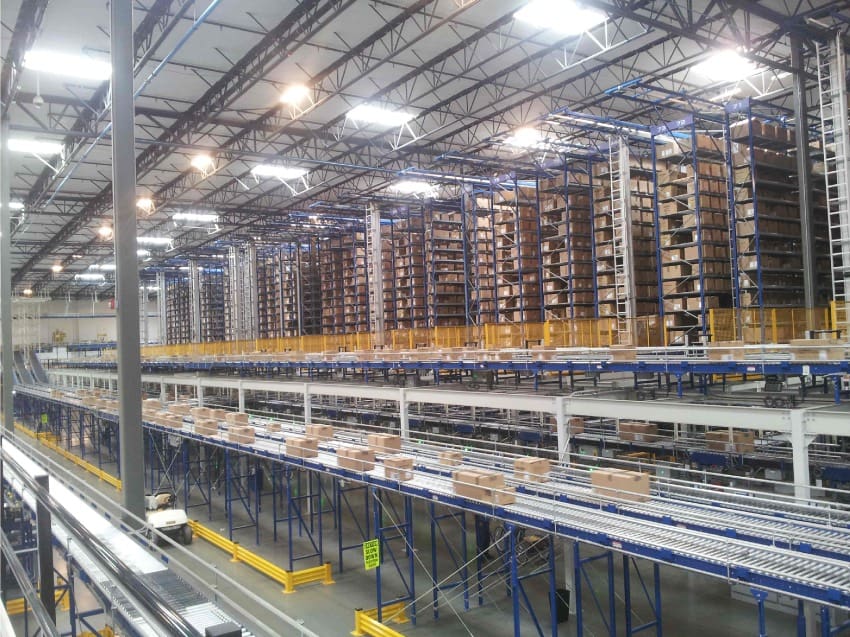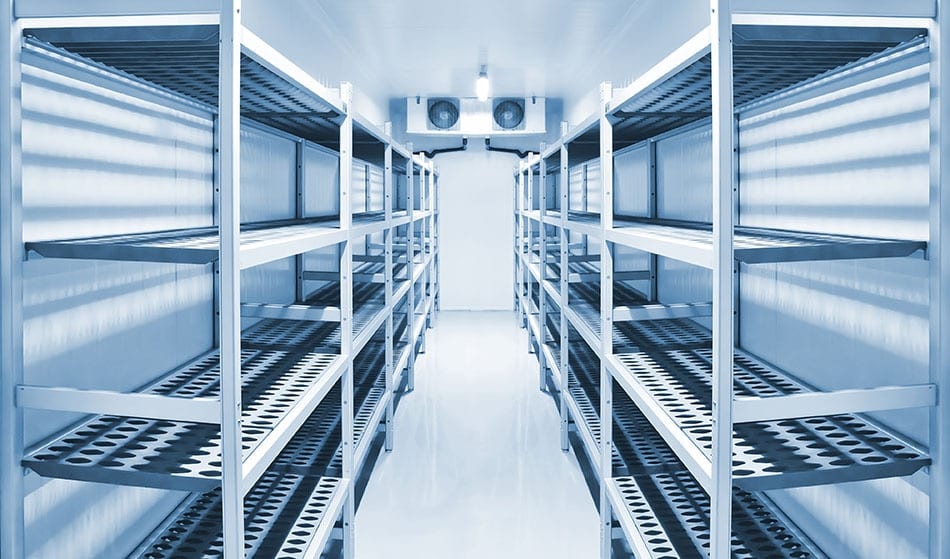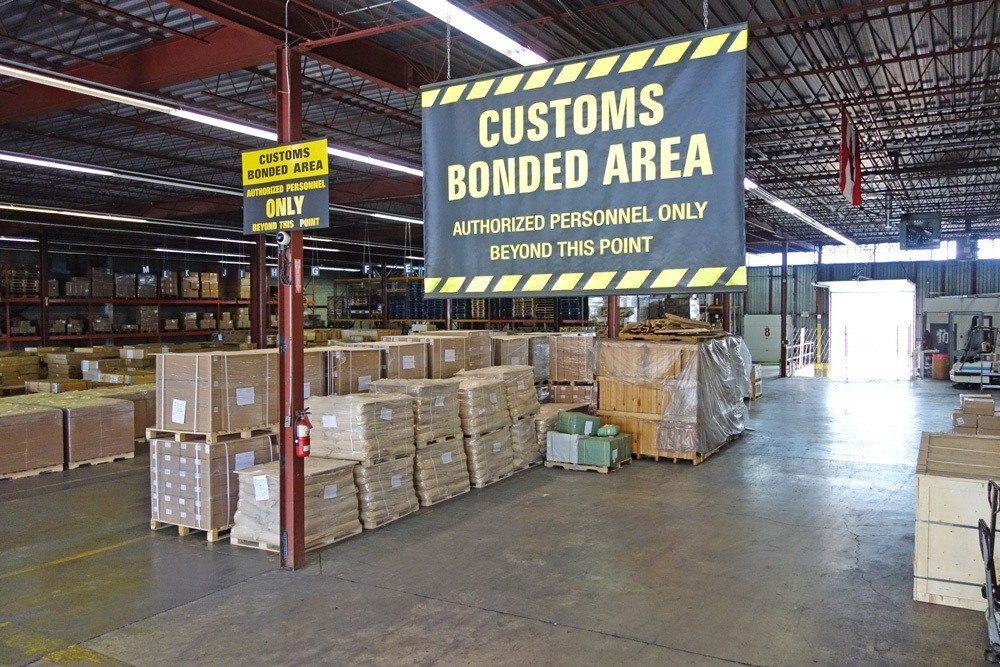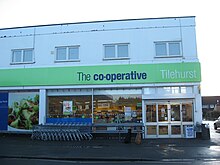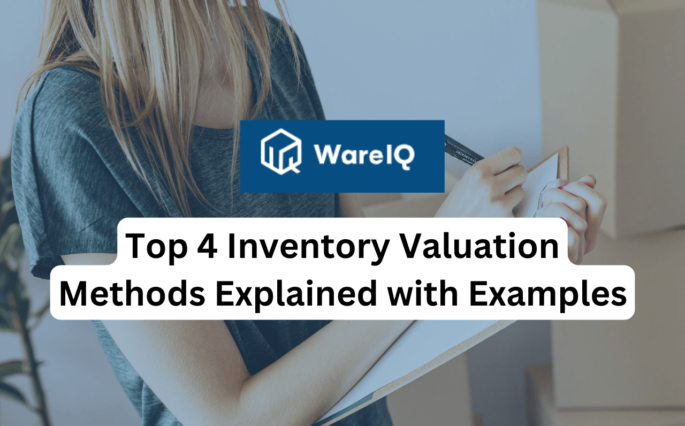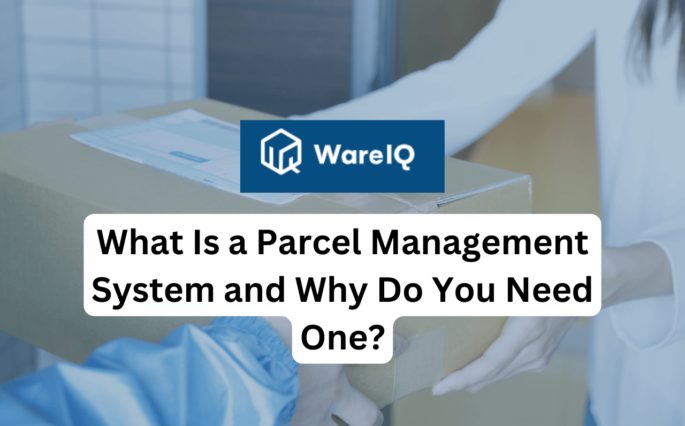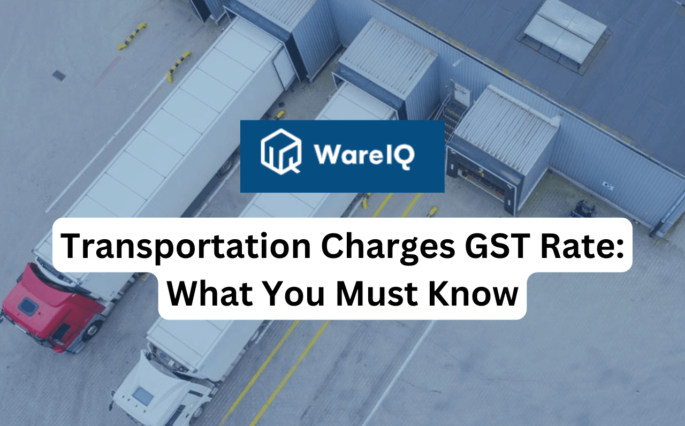10 Types Of Warehouses in eCommerce & How Does it Work in 2025

What comes to your mind when you think of “eCommerce Warehousing”? Typically, we think of a huge shed-like space with an unsightly number of racks and shelves, goods and containers strewn all over, amidst a monotonous surrounding.
It is important to note that there are many types of warehouses and it may be surprising that typical modern-day eCommerce warehouses are the complete opposite. They are clean, brightly lit, well-organized, and filled with an unending buzz of frenetic activity. People, parcels, technology, monitors, goods carriers, and mini-cranes, the list is endless. Read further to get a better understanding of the different types of warehouses in eCommerce and which would be the right fit for your business.
What are Warehouses?
The concept of warehousing: The formal description of eCommerce warehouses is that they are huge structures such as a building or shed that houses goods and cargo (both raw materials and finished goods) till they are ready to be shipped further.
Naturally, the sizes, locations, infrastructure, and scale of warehouses vary greatly depending on what they are used for, the position they occupy in the fulfillment network, and so on.
Several elements impact the selection of the type of warehouse you should choose, such as the industry it serves, what its ecosystem looks like, and locational and definitive business requirements. Importantly, all this directly impacts achieving customer satisfaction, which is the ultimate metric of a successful business.
The eCommerce warehouse is an important cog in the order fulfillment wheel – it not only stores inventory but also forms a close working relationship between online firms, its distribution model, and the final customer. A strong network of eCommerce warehouses is critical-to-success for eCommerce firms.
Third-Party (3PL) logistics, warehousing, and fulfillment centers: 3PL fulfillment companies conduct a host of services for their clients. Typical examples are inventory storage, order receipt, processing, dispatch, and cross-docking.
Given the range of services and scale that 3PLs offer as a one-stop shop, it enables the supply chain to function more efficiently, faster, and more economically. As a result, its clients can focus on running the core elements of its business, i.e., sales, consumers, logistics innovations, profitability (etc.) without any extra hassle.
When an online retailer outsources its warehousing and eCommerce fulfillment requirements to a 3PL, its capabilities – across locations, inventory, trained employees, optimized cost structures and compliance – help firms achieve seamless and efficient warehouse logistics. In addition, your 3PL’s warehousing capabilities should keep pace with your expanding needs as you grow.
Additionally, you can learn about different types of warehouses here.
WareIQ, an eCommerce fulfillment company, empowers online brands with a superior-tech platform to compete with Amazon like service levels by bringing their average delivery timelines from 5-10 days to 1-2 days.
What Factors Do You Need to Keep in Mind While Choosing a Warehouse in 2025?
When contemplating starting a new eCommerce business, or a business of any sort that involves the movement of materials and goods, your warehouses and fulfillment centers become an invaluable element for success. Not only must they synergize with your business strategy, but must also tick all the checkboxes that matter.
Listed below are some leading factors that you must consider while selecting between the types of warehouses for your business:
Efficiency in design and layout
Firstly, the design and layout of your eCommerce warehouse must be determined by your requirements, i.e., the type of goods, the storage guidelines, government rules (etc.). You shouldn’t put the cart before the horse.
Not all eCommerce warehouses are built equal. For example, if an old building with limited column spacing or ceiling height would affect that type of cargo and your eCommerce warehouse operations, then other types of warehouses would be better suited for you.
Select the one’s where the design has been developed, keeping in mind the flow of raw materials into eCommerce warehouses and, likewise, the flow of goods outwards.
These warehouses are hubs of activity. People, machines, technological equipment, electrical connections, various controls, and many other components are all working in close proximity. As you would imagine, many of these elements could create a dangerous scenario for life and property if not managed properly. Therefore, make sure to check for an ergonomically designed layout that would ensure a seamless and efficient union of man and machine. For example, rough surfaces or sharp edges of shelves must be eliminated.
Availability of workforce
By extension of the point above, they employ hundreds of workers who work around the clock. Selecting a warehouse because they are cheaper and whose locations are mostly in remote areas may affect your ability to attract workers or cause them difficulty in their daily commute, and safety, even if you plan on moving your existing workforce from one location to another.
Therefore, selecting a location that is easily accessible by your workforce is generally a key criterion for choosing the types of warehouses. Locations with a dense population and the presence of convenient transportation hubs generally score highly while making this selection, especially the latter. Even if commuting takes some time, at least it is made convenient. If your requirements have seasonal variations, then living quarters, canteens, banks, grocery supplies (etc.) to facilitate your workforce also become important.
Operational intensity
The intensity of operations and which way this intensity will go in the future is another important consideration. If your operations are light enough, then you can select the type of warehouses accordingly. Other variables such as outdoor facilities for storage, noise pollution caused, emissions (etc.) form a part of the consideration set when choosing a location(s) for your eCommerce warehouses.
Accessibility to transportation
Unless warehouses for eCommerce are closely connected with convenient modes of transport, it would be self-defeating. Remember that transportation makes up about 20-25% of your operating cost and directly affects the delivery times you can achieve. For goods that are fragile or need temperature-controlled transportation, poor accessibility would mean additional difficulties.
Whether air, water, rail, or land – whatever your needs are, it is important that the location of your warehouse is easily accessible.
For example, if you deal in heavy cargo across international borders and use ships to carry your goods, you would likely need a strong road or rail network to complete the cargo movement (both inward and outward).
The capability of handling material
Again, the type of products, cargo, and materials that make up your business will always be the determining factor in the types of warehouses you select.
If fragile items (e.g., art, crockery, glass, and jewelry) are your main line of business, then ground floor locations are ideal, or at least not on a much higher level. In such cases, the layout of eCommerce warehouses should be spread out horizontally versus one with several floors. If hazardous chemicals or materials form part of your cargo, then you will almost certainly have to use locations that are peripheral to the city. Most governments also have guidelines that regulate the layout and location of different types of warehouses, depending on the inventory.
Equipment, cross-docks, and staging facilities are critical in material handling, and you must consider this while choosing a warehouse. Available data makes it painfully evident that a significant percentage of breakages and product damage occurs during loading and unloading procedures.
If trucks are your first mode of transport, then eCommerce warehouses must have depressed docks, which may need to be internal, and so on. Similarly, one cannot operate a vast distribution network unless the warehouses have cross-docks.
Availability of space
Well, this is probably the most obvious requirement of all. Unless eCommerce warehouses are sized to house your entire inventory in all its various shapes and sizes, they haven’t fulfilled their most basic requirement.
For companies starting or expecting to grow rapidly in the future, the capability of different warehouses for expansion is important. The network maintained by your 3PL is also important – you wouldn’t want to select a 3PL that doesn’t operate fulfillment centers or warehouses in locations you expect to grow into.
Ability to comply with regulations
Just like all aspects of business operations have to comply with their applicable rules and regulations, so do eCommerce warehouses. Before selection, you must be aware of the applicable laws in your location and ensure that your warehouse provider adheres to them.
For example, you cannot store certain types of goods (e.g., hazardous materials) in certain areas. Or, you may need to hire local workers for your eCommerce warehouses.
Proximity to customers
Naturally, proximity to your end customers is an important consideration. If your target group is located around a specific region, using warehouses for eCommerce activities in that area itself will offer a strategic advantage. You can fulfill their needs quickly, better understand their requirements, and get accustomed to their purchasing habits.
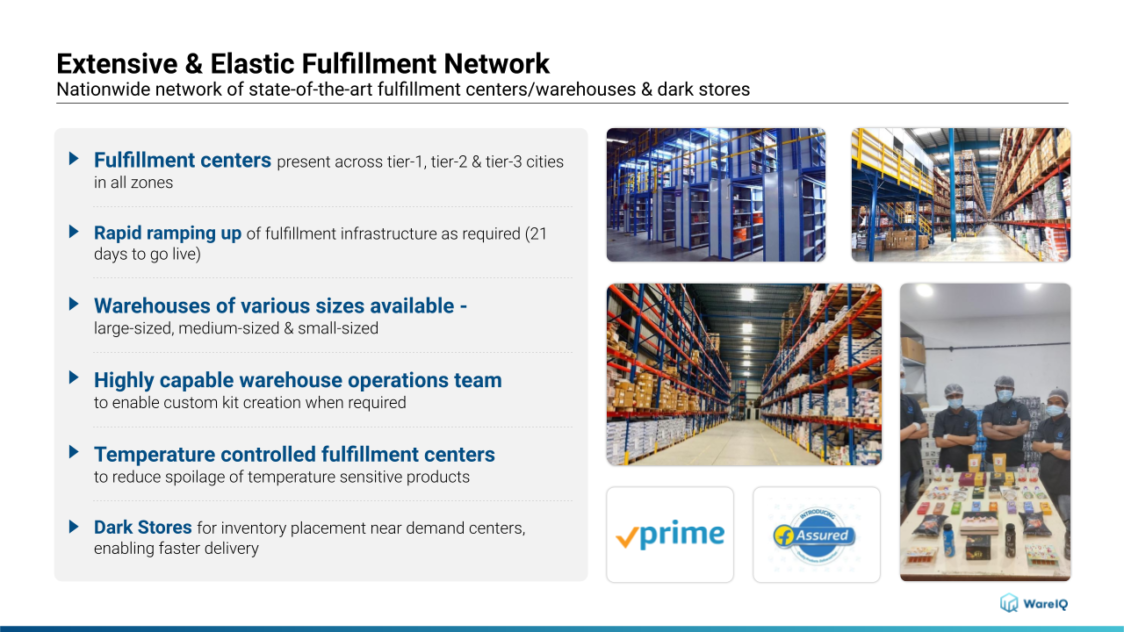
What Advantages Do Warehouses Offer?
There are many advantages of using a capable and well-organized network of eCommerce warehouses. Let’s look at some important ones:
Operational efficiency
When you outsource your warehousing requirements to a 3PL firm, you are aware of the capabilities of their services. The relationship is based on a well-defined SLA with clearly defined expectations from both parties. Therefore, once up and running, your partnership enables you to achieve an efficient operation quickly due to:
- Expertise
- Flexibility
- Measurability
The combined impact of all these factors results in a significant saving of time and resources.
Inventory management
Your warehouse management service’s driving objective (WMS) is to keep your customers happy. That means delivering their parcels safely, on time, and at competitive rates. Additionally, customers want to be kept in the loop about the progress of their parcels. Therefore, WMS ensures real-time information on parcels in transit and identifies them with a host of trackers such as SKU, batch details, serial numbers, etc.
Data about the movement of goods, to and from eCommerce warehouses, is updated in real-time. The combined effect of all this is that your entire inventory management, including re-order levels, reverse logistics, current and developing trends, and projected requirements, is taken care of. This is very important for retail warehouse since it helps them understand consumer behavior, plan for future requirements, expand their range of products, etc.
Flexibility
If you decided to retain your warehousing and storage as an in-house function, you would potentially be limited by your ability to handle extraordinary circumstances or obstacles. For example, if an emergency were to arise or a larger-than-anticipated order was received, you would need to dedicate additional resources to handle such a situation. Possibly, workers wouldn’t be trained or have enough time to handle the situation successfully.
Because of this, partnering with a 3PL for your warehousing needs would set you up to benefit from their capabilities. 3PLs are vast global organizations that deal with a wide range of clients, ecosystems, and geographies. Due to their scale and experience, they are supremely equipped to handle a vast array of functions and annul potential problems.
Risk mitigation
As you would’ve guessed by now, running operations of eCommerce warehouses isn’t an easy task by any means. It requires significant investment, expertise, a large workforce, the latest technological systems, employee recruitment and training, and tax and legal compliance.
While the scale of business offers profit and acquires market share, it also brings risk, i.e., the costs of failure such as being upstaged by competition, being made obsolete by innovation, or just being forced out by better, more efficient players and also a potential increase in logistical costs. Such significant expenses, including CapEx, when locked by order fulfillment and warehouse service activities, create inefficiencies that will show up in your business results sooner than later.
However, using efficient warehouse services achieves the exact opposite, i.e., it takes away the risk of investing and maintaining your network of eCommerce warehouses and allows you to concentrate on managing the core business. Over a period of time, this improves profitability and productivity. Therefore, make sure you analyze your needs accurately and select the right 3PL accordingly.
Modern technological systems
Just like the very birth and growth of modern-day eCommerce behemoths is a result of progressing technology, so are the benefits offered by 3PL warehousing services.
Fully integrated systems seamlessly connect with online platforms and stores. Some examples are given below:
- Order management (receipt, processing, delivery)
- Order-delivery services
- Comprehensive distribution services
- Order tracking
- Inventory management in real-time
- Automated re-order levels
- Detailed and automated reports
What are the 10 Types of Warehouses to Look for in 2025?
Let’s look at the top ten types of warehouses. While each has its pros and cons, your business requirements determine which one would help you run your operations in the best possible way.
Private Warehouse
As the name suggests, they are types of warehouses that are owned and operated by manufacturers, traders, and resellers and are exclusively used for their supply-chain management and activities. As the costs and fees of availing the benefits of private eCommerce warehouses can be high, many warehousing companies prefer to use (or combine them with) the services of public warehouses.
Maintenance costs include fixed costs and variables. CapEx, insurance, taxes, interest, etc. make up fixed costs, whereas outgoing monthly costs like operating/maintenance are variable.
Firms typically use private eCommerce warehouses for:
- Building a competitive advantage over the competition
- Servicing a geographic area with an elaborate network of warehouses and fulfillment centers
- Matching company scale/ growth requirements with the warehouse’s services and capabilities
Typical examples of private eCommerce warehouses include:
- Producers (e.g., farmers) construct and manage eCommerce warehouses near their farmlands
- Wholesalers/ Retailers construct eCommerce warehouses close to their distribution and selling centers, or production units
- Retailers take eCommerce warehouses exclusively on rent
- Wholesalers lease or own eCommerce warehouses exclusively
Public Warehouse
Public warehouses are types of warehouses that enable their customers to achieve a high degree of freedom of operations in managing their supply-chain network. Since private eCommerce warehouses may not be affordable, this option is always viable for such firms.
Naturally, renting or buying is often unaffordable for eCommerce startups. Therefore, utilizing public eCommerce warehouses on a short-term or long-term lease, usually available by monthly agreement, becomes a viable option for such small businesses. Agreements could be based on cost-per-square-foot or even on a cost-per-pallet.
Generally, warehouses for eCommerce will also offer services like building maintenance, organizing transportation, inventory management, and employing workers to manage operations etc. It works out well since all costs are apportioned across several clients, and you pay a proportionate amount.
Distribution Center
Distribution centers are types of warehouses that have become a critical cog in the eCommerce supply-chain wheel. Due to the increased usage of technology and electronic tools, these distribution centers can now provide reliable and efficient transportation for cargo. Typically, such distribution centers have a much larger storage capacity than just a warehouse and provide prompt transportation facilities for huge volumes of cargo, on short notice.
These centers are also located close to transportation hubs to optimize the speed of receipt and delivery. An ideal example is the distribution of highly perishable products, e.g., fresh vegetables and fruits. The receipt, sorting, and packing/ repacking of such products are done within a working day to minimize wastage.
Cold Storage
Understanding the type of storage this type of warehouse provides is pretty transparent.
Cold-storage facilities are types of warehouses that are critical for temperature-sensitive products such as medicines, pharmaceutical products, fresh produce, ice creams, plants, meat products, etc. Perhaps, the importance of such a facility was recently reinforced when the Covid-19 vaccines had to be transported and stored under stringent temperature control measures. This goes a long way in ensuring the projected shelf-life for these goods.
Pick, Pack & Ship Warehouse
When eCommerce warehouses receive an order – whether from a physical store or an online portal – the process followed thereafter is to “pick, pack, and ship” the product. And, hence these are types of warehouses that are named after that process.
They use modern gadgets like scanners and workers/robots to pick the products, required to fulfill their list. These “picked” products are then packed, tagged, and loaded into containers and shipped to their destinations.
Read our blog on shipping aggregators to understand how you can outsource your shipping and distribution requirements to dedicated companies.
Smart Warehouse
Smart warehouses are types of warehouses that have increased in importance in the Modern Age, where everything is run by rapid advances in technology. The very existence of new business models such as eCommerce and the “App Economy” gives us daily reminders of this sensation. Additionally, tools such as data analytics, Artificial Intelligence, and Machine Learning provide the backbone for running these modern, tech-driven ecosystems.
Smart eCommerce warehouses are no different. When businesses seek to eliminate the costs of human error, smart eCommerce warehouses become a go-to option. Extensive use of drones and robots is deployed in warehouse operations, and manual intervention or usage is minimized or eliminated.
However, this model does have some limitations and has stringent requirements for successful operation – the entire warehousing procedure needs to be redesigned so that the technology can be incorporated. This requires technical know-how, and upfront investment and necessitates training/retraining of warehouse employees. Breakeven and profitability may take several years.
Bonded Warehouse
Bonded warehouses are types of warehouses that can be owned by both private and government agencies and are a mechanism utilized by the government to ensure that the importers/exporters of these goods pay their due taxes on time. Without paying their taxes or duties (e.g., import duty, excise), an importer cannot even open their goods, let alone claim them.
As you can imagine, bonded eCommerce warehouses have a crucial role to play in cross-border trade, and those eCommerce firms that supply orders across international borders are well-served by them. This also works well for importers that can stock their goods here until they find a buyer for these products. Since firms do not have to pay any duty till they want their goods released, it works efficiently. For private agencies to operate bonded eCommerce warehouses, they need to get the required licenses as issued by the government.
Climate-Controlled Warehouse
If you think that simply a temperature-controlled environment for your goods isn’t enough, then climate-controlled eCommerce warehouses offer the next level of protection during storage.
They are types of warehouses that control the temperature and humidity under which your goods are stored. For many products, the correct humidity levels prevent mold or mildew formation, which harms fabric, wood products, paintings, and artifacts, amongst many others. Both humidity and temperature are controlled to a stringent standard, and the variances allowed are minimal. This ensures a consistent atmosphere. Cleanliness and overall facility upkeep are important features that climate-controlled eCommerce warehouses must be particularly mindful of.
Government-Owned Warehouse
They are types of warehouses that the government, whether State, Central, or an affiliated agency, owns and manages. They are available for use by private eCommerce firms and often present an economical option for startups or businesses that are growing while effectively offering the same services. Importantly, they offer peace of mind since the government manages them. The Central Warehousing Corporation of India is a renowned example.
Cooperative Warehouse
Cooperative Warehouses are one such type that are owned and managed by cooperative societies. They tend to be non-profit since their objective is to promote members of the cooperative, who can use these warehouse services at reasonable rates. Milk, winery, and farmer cooperatives are good examples. eCommerce firms that operate within their purview can take advantage of such types of warehouses.
Conclusion: Does Your Business Need a Warehouse?
Well, as evidenced by the above article, you should be able to see the numerous benefits that a well-researched, efficiently managed, and elaborate network of eCommerce warehouses brings to your eCommerce business.
While there may be cases of companies (e.g., a fledgling startup) that may make do with an in-house option (e.g., garage, basement) in the initial stages, growing companies will almost always opt for type of warehouse that suits their requirement and adds value to their business. WareIQ is a company that offers many ecommerce warehousing services that your business requires.
Established in 2019, WareIQ, a Y-combinator backed startup, has rapidly grown to be the leading provider of full-stack eCommerce fulfillment services for some of the most reputed brands in India. WareIQ offers a full-stack platform for eCommerce companies to enable same-day delivery and next-day delivery to customers – an Amazon Prime-like experience but accessible to everyone.
WareIQ fulfillment is a service where WareIQ offers you seamless management of your inventory and order fulfillment operations in WareIQ fulfillment centers, which are located near high-demand clusters. You store your product in our fulfillment center where we take utmost care of your inventory.
WareIQ has customized offerings for merchants experiencing different order volumes as well as having different delivery speed expectations. WareIQ is probably one of the very few fulfillment tech companies in the world that have same-day delivery service for their customers under their product “WareIQ RUSH”.
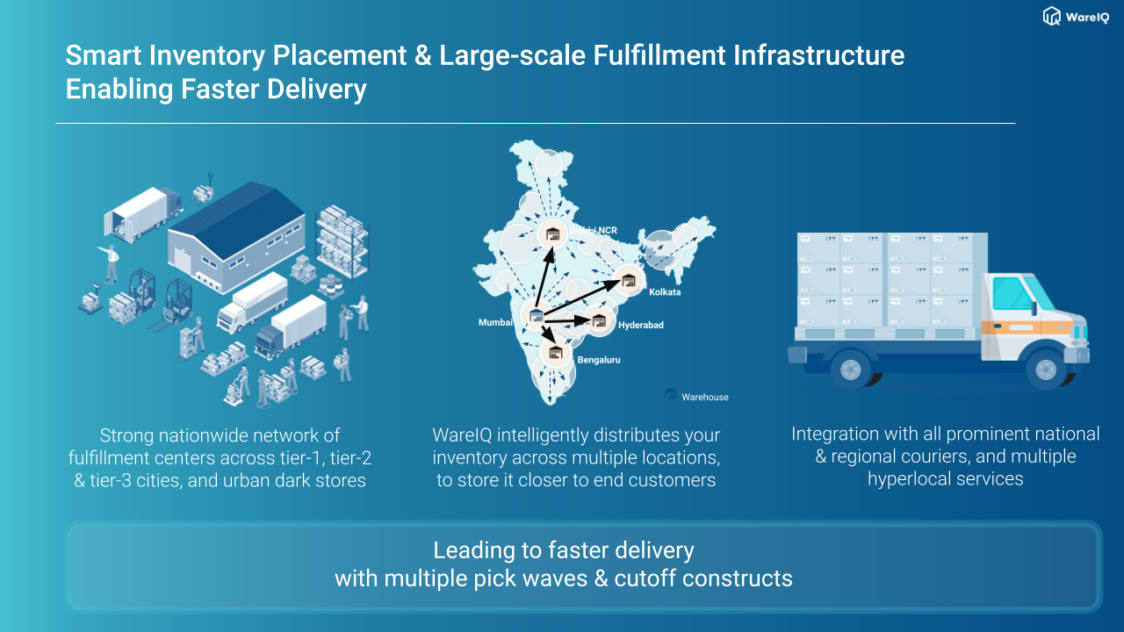
WareIQ’s warehouses are present across the nation. We place inventory closest to your customer using a smart inventory placement system based on AI-ML algorithms. So when the customer places the order, the item is available in the closest fulfillment center to them and it is then delivered by same/next day via our shipping partners.
- Pan India Fulfillment & Darkstore Network: Plug-and-play fulfillment infrastructure with no minimums, which is compliant with Amazon Seller Flex, Flipkart Assured, Myntra and other marketplaces
- Inventory & Network Planning Excellence: Best-in-class AI models for sales forecasting, product segmentation, and inventory management to reduce inventory by 40% and increase revenue by 10%.
- Vertically Integrated Fulfillment Tech Stack: Our Fulfillment Tech Solution supports integrations with 20+ top marketplaces & D2C platforms, and prominent national, regional and hyperlocal couriers, enhancing reach by covering deliveries for 27,000+ pin codes
- Supply Chain Productivity Applications: Integrate a host of supply chain productivity apps with a single-click to your existing CRMs, ERPs & accounting software to manage your logistics workflows from one command center. Use Apps like RTO Shield to get 100% RTO protection, Branded Tracking to turn your order tracking page into a profitable marketing channel, and many more.
Trusted by 300+ top Indian brands, we are helping them accelerate online sales and expedite their growth through a synergistic combination of advanced technology, robust fulfillment infrastructure & seller enablement services!WareIQ is backed by leading global investors including Y Combinator, Funders Club, Flexport, Pioneer Fund, Soma Capital, and Emles Venture Partner.





